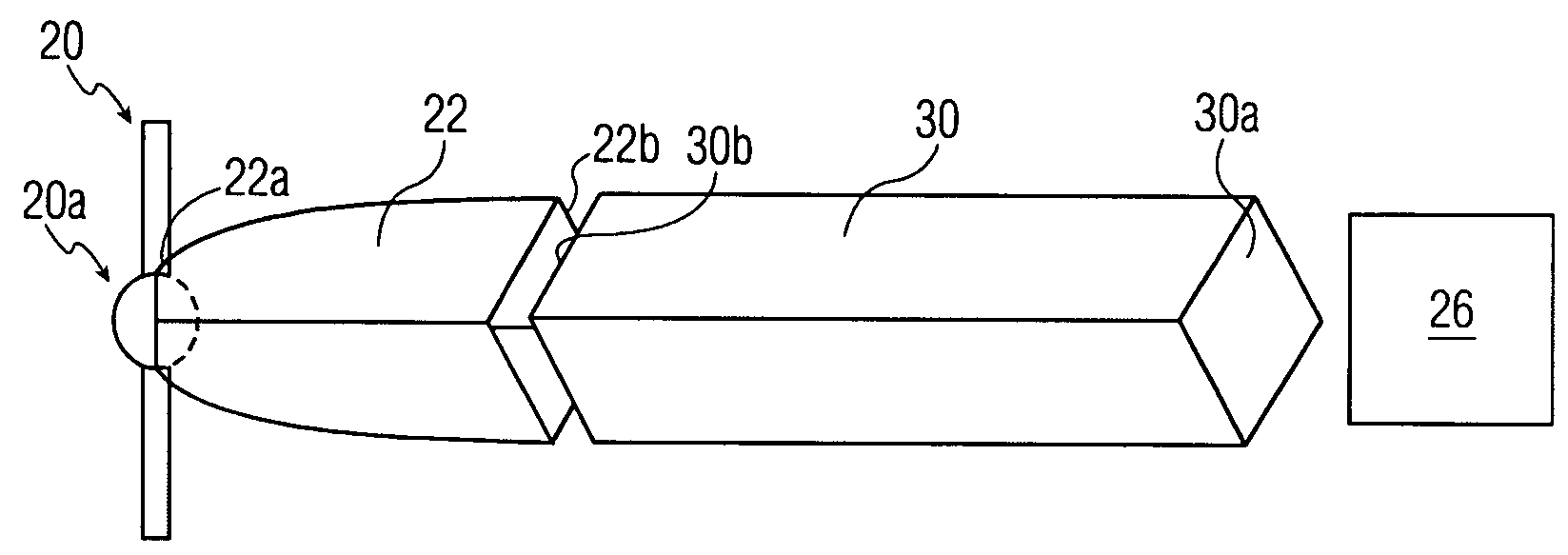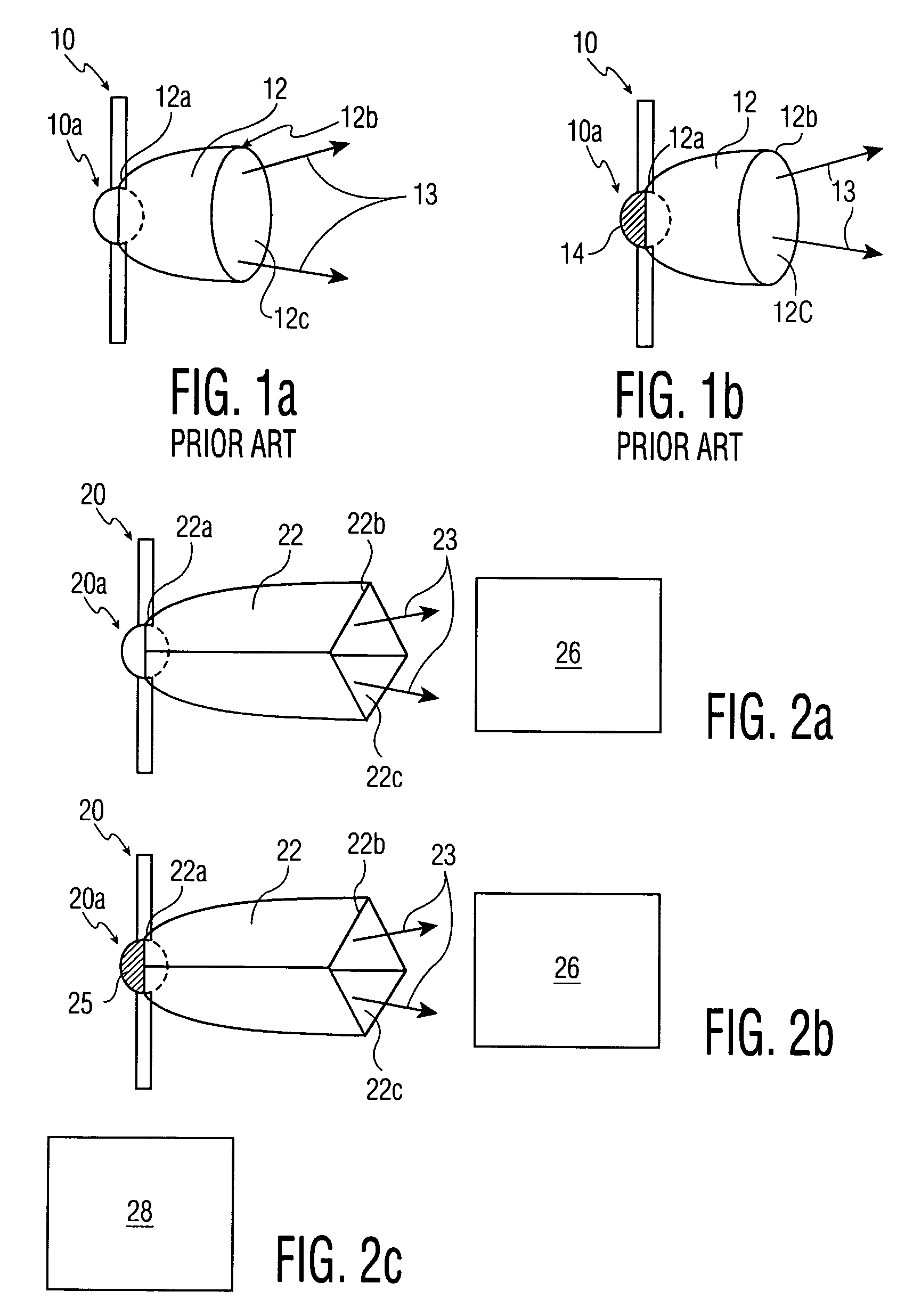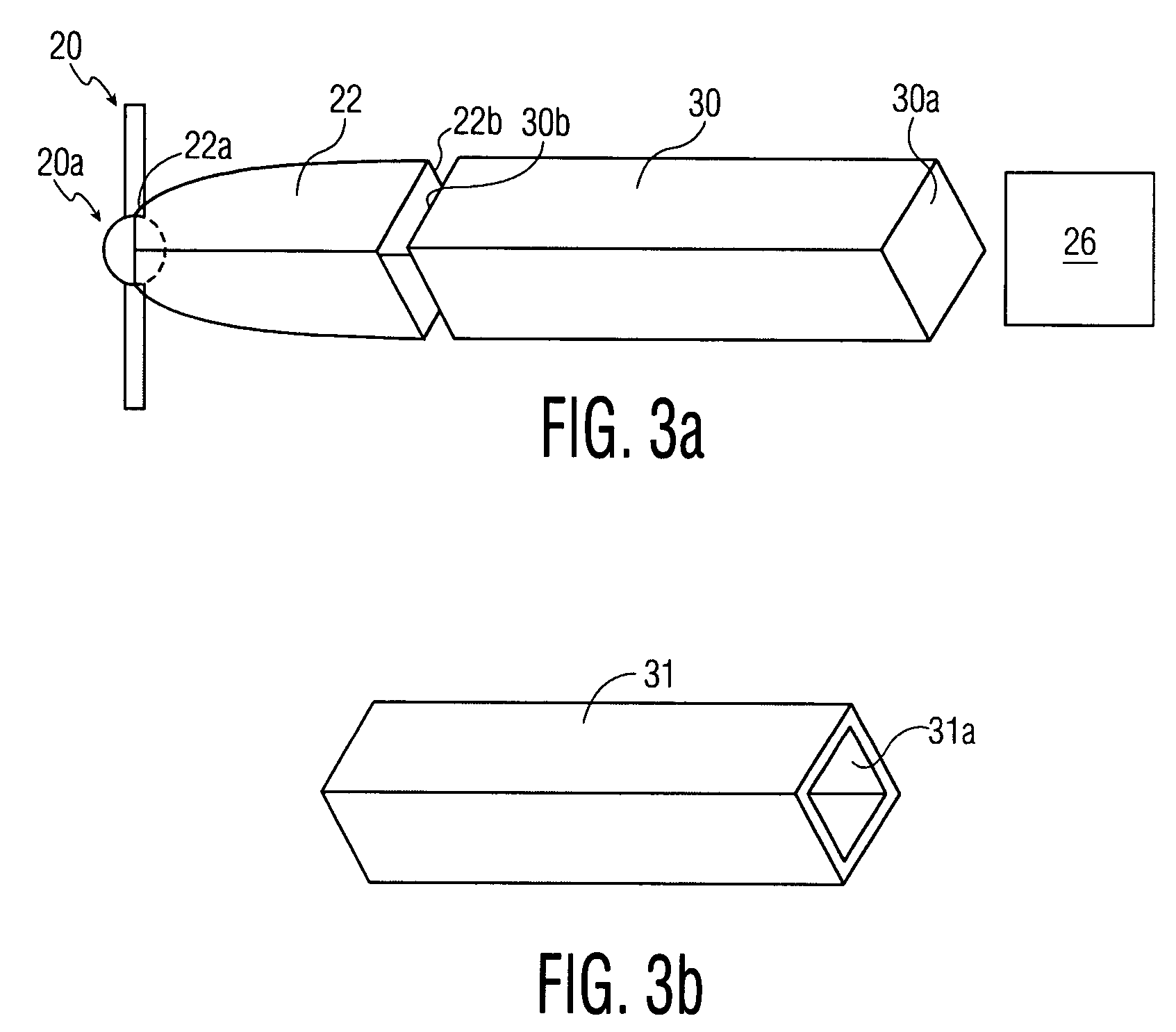Compact, high-efficiency illumination system for video-imaging devices
a video-imaging device, high-efficiency technology, applied in the direction of lighting and heating apparatus, mechanical equipment, instruments, etc., can solve the problems of ineffective image optics, insufficient light coupling efficiency, and needing a long air gap, so as to increase the efficiency of illumination system, and increase the efficiency of light coupling
- Summary
- Abstract
- Description
- Claims
- Application Information
AI Technical Summary
Benefits of technology
Problems solved by technology
Method used
Image
Examples
Embodiment Construction
[0024]To put the present illumination system for video-imaging devices in perspective, the prior art lighting devices of FIGS. 1a and 1b, not used for illuminating video-imaging devices, are first considered. FIG. 1a shows a light source 10, such as a metal halide discharge lamp. A bulbous section, or arctube, 10a of the lamp extends into an inlet 12a of a non-imaging light-collector 12. Collector 12 performs an angle-to-area conversion on light from source 10, reducing the angle of light 13 to a lower half angle, such as 38 degrees, for reception by a light pipe (not shown), for instance. Inlet12a of the collector, and outlet 12b of the collector, are both round or oval. The collector shown is hollow, and has an interior reflective coating 12c. Prior art FIG. 1b is similar to FIG. 1a but shows a mirror coating 14 on about one hemisphere of arctube 10a of the lamp, for reflecting visible light through the other hemisphere and into collector 12. U.S. Pat. No. 6,304,693 for Efficient ...
PUM
 Login to View More
Login to View More Abstract
Description
Claims
Application Information
 Login to View More
Login to View More - R&D
- Intellectual Property
- Life Sciences
- Materials
- Tech Scout
- Unparalleled Data Quality
- Higher Quality Content
- 60% Fewer Hallucinations
Browse by: Latest US Patents, China's latest patents, Technical Efficacy Thesaurus, Application Domain, Technology Topic, Popular Technical Reports.
© 2025 PatSnap. All rights reserved.Legal|Privacy policy|Modern Slavery Act Transparency Statement|Sitemap|About US| Contact US: help@patsnap.com



